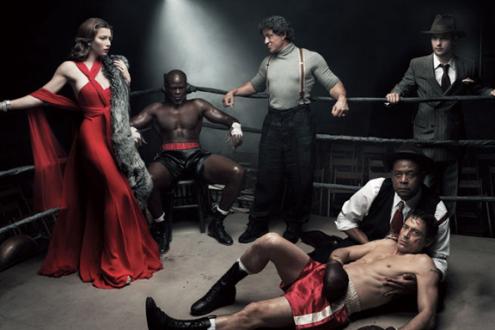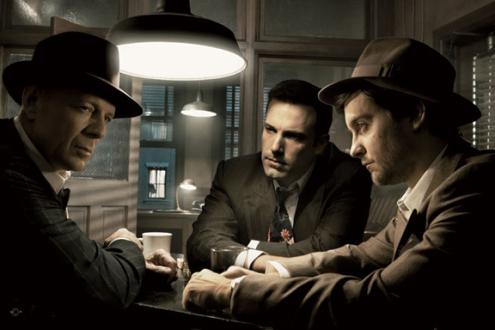Everyone who cares about cinema and its history, of course, has heard about the existence of a genre such as noir. What is it and what are the features of films of this style, not everyone can clearly explain, even if there is an understanding of what is being discussed. But the cinematic monuments of the era of the great American depression deserve to take a closer look at them.
From the history
It is not so easy to describe what is hiding under the stylistic definition of noir. What this is can only be understood in relation to the historical era that gave rise to these films. In the thirties of the last century, American society was going through one of the most difficult periods of its development. Later in history books he will be called the Great American Depression. It seemed that the country was heading into the abyss, and many predicted its inevitable death. And art at all times and eras reflects the surrounding reality according to its complex laws. It was this reaction to the depressed state of American society that the noir genre in Hollywood cinema became. It is hardly possible to study history from films of that period, but an idea of the moral state of American society can be quite distinct.
At the origins of the genre
The phenomenon, which in the subsequent critics will designate the term film noir, began with the publication in 1941 of the film directed by John Houston "The Maltese Falcon". The film made a strong impression on the audience by no means an ordinary detective plot, but a painful depressive atmosphere in which its characters live. The heroes of the detective seem to deliberately provoke the public with their overt cynicism. Puritan American society had not yet managed to get used to such an image of morals in the middle of the century, so the noir genre was perceived by many progressive theater and cinema artists as a new fashion direction. And this trend over the course of two decades was destined to become one of the dominant in American cinema. Strictly speaking, film noir is not entirely justified to designate such a definition as "genre". No fundamentally new genre was invented. But films of this era are characterized by a peculiar style dating back to German expressionism, and sophisticated psychologism in revealing the characters' characters. In these films, it is not so easy to initially predict the further development of storylines and the final denouement of intrigue.

Classics of the genre
The noir genre quickly gained recognition from both professional critics and the general public. Directors, producers, screenwriters and other creators of cinema production quickly felt what new creative horizons this style opens for them. Over the course of twenty years, all the best has been created that went down in the history of world cinema under the definition of noir. What this term is - it is not necessary to know; it is from the vocabulary of professional critics and art historians. But the films of such directors as Raul Walsh, John Houston, Otto Preminger, Fritz Lang and Robert Siodmak became generally recognized Hollywood classics of the mid-twentieth century.
Expressive features
In noir style films, there are no simple plot constructions with an obvious outcome. Sometimes it seems that the authors themselves did not imagine at the beginning of the story being told how it would end. There are reasonable doubts about whether there is a pronounced screenwriting school of films in the style of noir. What is this if not quite a traditional Hollywood detective? But in the characteristic criminal plot of the film noir, the emphasis is largely shifted from the disclosure of the crime to the intricacies of the relations of the acting characters. The detective base here is nothing more than a background against which the main characters can reveal themselves. Paradoxically, films of the noir genre are much closer to the classical traditions of realism than anything that came before and after them. The action always takes place in the city, and in that part of it, where people, as usual, are given to vile passions and vices - in restaurants, bars, brothels and dens. Events are rarely set out in their chronological sequence. Such a fragmentation of presentation gives the action a specific atmosphere of instability. This technique was adopted by many creators in the subsequent era, in particular, directed by Sergio Leone in the masterpiece “Once Upon a Time in America”.

Stars of the genre
Many brilliant Hollywood stars owe their cinematic career to noir films. This style helped them to fully reveal their talent. The stars of the genre had no end to the offer of roles as private investigators and detectives, as well as various kinds of gangsters. Suffice it to recall the acting work of Bert Lancaster, Humphrey Boggart, Orson Welles and Dan Andrews. Among the actresses who became the symbol of noir style, Rita Hayworth, Lauren Bacall, Gene Tierney, Joan Crawford and Barbara Stanwick should be noted first. And upon careful examination in these films, you can notice some actors whose professional career will take place in the subsequent cinematic era. Their creative debut took place in the supporting roles in films, when in Hollywood, noir was the dominant trend.
Alfred Hitchcock
Speaking of the noir genre, it is impossible not to mention the classic psychological thriller Alfred Hitchcock. His work does not fit into narrow stylistic definitions and goes far beyond noir. But his debut film work began with just such films. They determined the dominant vector in the development of the master of "horror films." He went through a good professional school and took many fine tricks from the film noir. He learned to aggravate an already depressing tension and saturate the atmosphere with negative energy in his early works.
Mutual influences and intersections
Of course, the best noir films were created in Hollywood and became one of the brightest pages in American cinema classics. But any bright phenomena in art always affect parallel artistic worlds. So, noir films had a strong influence on the formation and development of post-war Italian neorealism. Traces of this trend can be clearly traced in many national cinema schools of Western European countries. In a bizarre way the style of noir was reflected in French cinema of the sixties. The name of this phenomenon is taken from the French language, but it came to France from Hollywood. And at home, this style in many respects predetermined the subsequent work of such different masters as Stanley Kubrick, Orson Welles, Nicholas Ray and Billy Wilder. Even Stanley Kubrick’s latest masterpiece, Eyes Wide Shut, contains a clear reference to the origins of the noir tradition.
Anime noir
The style of noir was beaten in a very peculiar way in traditional Japanese animation, for example, in a 26-episode film in the anime genre "Noir" that was released on the screens at the beginning of the century and quickly gained popularity. By the way, this is the name of the series, and the name of the main character, and the designation of the stylistic tradition, which this work tries to follow impeccably. Literally translated from French, “noir” is nothing more than a black designation. But this is also a powerful artistic image. The main character of the anime series, among other things, also fights with the darkness of her own amnesia. The echoes of the noir style can be easily found in other works of traditional Japanese animation. Anime and noir organically complement and reinforce each other. It is from these two sources that such a work as the best-seller of Quentin Tarantino's "Kill Bill" grows. If you take a closer look, this is nothing more than anime plus noir. That's just a film was made already on Hollywood technology at the beginning of the third millennium.